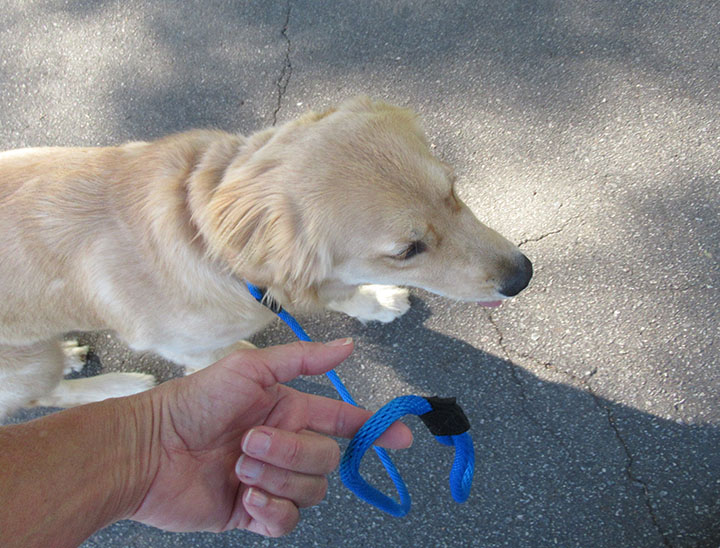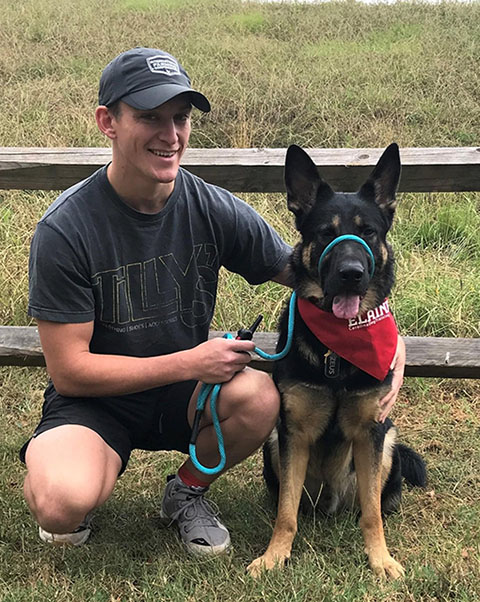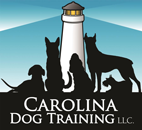Loose Leash Walks: (60 – 90 minutes)
No More Pulling! Learn to walk your dog without pulling in just one session with one follow-up. Initial session held at Carolina Dog Training and follow-up session may occur at a local community setting containing higher level distractions best-suited to your dog.
Includes: The Transitional Leash (see below for description of this *tool)
Handler must be at least 18 years old and committed to daily practice for long-term success.

The tools we use are meant to empower you, the human, in communicating with your dog. When you understand how to speak your dog’s language, you will have bridged that communication gap and as a result, develop a more satisfying human/canine relationship. This begs the question: How do dogs communicate? The answer is threefold: vocalization such as barking or whining, body language clusters such as wagging tail with tongue out or tail tucked between legs with closed mouth and finally, pressure such as one dog staring at another or the mama dog’s teeth on new puppy’s skin. Humans are obviously not going bite their dogs but we can use ourselves: body language, vocalizing along with appropriate tools that will provide a form of pressure. Typical examples of pressure are how leashes are commonly used to keep their dogs from pulling during walks. When a dog pulls north and you pull back south, you are creating oppositional pressure which never works! This is because dogs instinctively resist and counter this form of pressure by pulling against it and this is why sled dogs pull.
Carolina Dog Training typically uses a variety of tools. However, the remote training collar and the transitional leash are the most commonly used for its overall effectiveness.
*The Transitional Leash places pressure down on the dog’s muzzle in much the same way as a stable-minded adult dog will place his mouth on the muzzle of the over-excited puppy with just the right amount of pressure. The puppy instinctively knows to go into a calm and submissive posture. Then the pressure is removed. It is the release of this pressure that becomes the reward for that puppy. Dogs understand pressure to mean calm down and change behavior and this is why the transitional leash is so effective.
As with any tool, the dog must get conditioned to respond appropriately working through flight or fight behaviors toward acceptance before going forward. Acceptance can’t be forced and so, this process may take time and patience.


